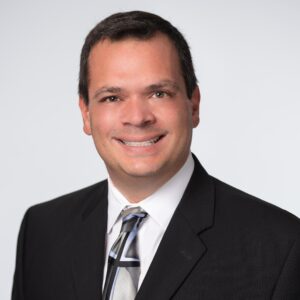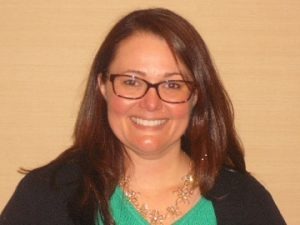Decrease survey deficiencies: An educational intervention
Failure to maintain compliance with applicable rules and regulations can be costly to skilled nursing facilities (SNFs). The Office of Inspector General (OIG) reported that approximately $81.7 million were charged in civil money penalties during 2001.1 In 2008, the major deficiencies received by SNFs most relevant to nursing services included: accident prevention (44%), quality of care (33%), comprehensive care plans (26%), pressure ulcer prevention/treatment (21%), and unnecessary drugs (21%).2
It is well known that the number of deficiencies in SNFs is increasing. Trends from 2005 to 2007 demonstrated a 9.5% increase in the total number of deficiencies given to SNFs during the survey process. As of 2007, 91.9% of all nursing homes had received deficiencies.3 Skilled nursing facility owner/operators must take every step within their means to ensure that residents receive care and services consistent with applicable rules and regulations. In this article, we describe a case study of an educational intervention that was undertaken in an effort to reduce survey deficiencies.
NURSING EDUCATION IN GERIATRICS, LONG-TERM CARE
Many factors impact deficiencies received during the survey process. For example, it is known that lower RN and LPN staffing levels result in more deficiencies related to nursing care.4 It is also known that care of the older adult is covered minimally (if not missing entirely) in most nursing education programs. With the exception of basic nursing skills, nursing education programs teach students nothing about the nuances of nursing care in the SNF.5-7
What remains to be explored is whether providing nurses who work in skilled nursing facilities with additional education specific to gerontological nursing concepts and SNF regulatory requirements can impact the number or scope and severity of deficiencies received during annual or abbreviated surveys.
EDUCATION: AN ANSWER TO SURVEY DEFICIENCIES?
In an effort to reduce deficiencies that might be the result of nurses lacking knowledge of gerontological nursing concepts as well as SNF rules and regulations, we developed a program in conjunction with a board-certified gerontological nurse practitioner and a licensed nursing home administrator. The program consisted of 24 hours of instruction delivered over the course of three days. A complete outline of the topics included can be found in Table 1.
How would we know if the program worked? Our team examined survey deficiencies for the two years preceding the delivery of the educational program then monitored the facility for two years afterward. A six-month period of time separated both two-year periods while the educational programs were being delivered. Permission to conduct this study was obtained by the appropriate institutional review boards and governing body of the SNF. The program was delivered to a 185-bed Medicare-/Medicaid-certified Pennsylvania-based SNF that participated in the program.
Who attended the training? The educational program consisted of three 8-hour sessions delivered to RNs and LPNs employed in the SNF where the case study took place. For a staff member to be included in the training, he or she had to be employed for a minimum of six months to ensure that the individual had completed general orientation, unit/shift orientation where they would be scheduled, and completion of the probationary period. A total of 38 nurses (30 LPNs and 8 RNs) completed the three-day training provided over a six-month period. In the two years following the training, four of the RNs and 15 LPNs in the program left the organization (50% turnover).
Staff members received their regular pay rate and were excused from all floor duties during each day of training. Nursing staff’s attendance at the training program was mandated by the facility’s administrator. The same instructor provided training for all sessions to minimize variation in instructional technique and variations in presentation of content.
WHAT WAS MEASURED
Total number of deficiencies. The actual number of deficiencies received during annual or abbreviated (complaint) surveys for the two-year period before the educational program was provided and then for the two-year period after the program was completed.
Scope and severity of deficiency and description of deficient practice. This measure was selected to determine whether the intervention had any impact on the number of deficiencies or the scope and severity of any deficiencies received, particularly in those areas that were covered in the training sessions. This was how we attempted to determine whether teaching on the topic would have an impact on deficiencies received.
Number of residents involved in deficiencies. This measure was considered important in finding out how many residents were being impacted by the deficient practice. It was our intention to use the educational intervention to decrease the number of residents being impacted by a given deficient practice.
Number of abbreviated (complaint) surveys. This measure was selected as we sought to determine whether the educational intervention would have any impact on the number of abbreviated (complaint) surveys. Well…what happened?
THE RESULTS
Actual deficiencies in annual and abbreviated surveys. For the two years prior to the intervention (January 2006 through January 2008), there were seven complaint surveys of which three resulted in deficiency citations for the facility. In the two years after the intervention (July 2008 through July 2010), there were three complaint surveys (one resulting in deficiency citations). In the two years prior to and following the intervention, there were two annual surveys (in each group), both annual surveys resulted in deficiencies (which we will talk about in the next section). Although it is tempting to think that the intervention decreased the number of complaint surveys as well as any resulting deficiencies, we cannot jump to that conclusion. Many other factors could have impacted the number of complaint surveys, so we cannot say that the educational program (by itself) was responsible.
Pre-intervention deficiencies | Post-intervention deficiencies | ||||||
F-tag | Description of deficiency | Number of times cited | Scope & severity | F-tag | Description of deficiency | Number of times cited | Scope & severity |
F-241 | Resident dignity | 1 | E | F-279 | Comprehensive care plans | 2 | 1 D & 1 E |
F-309 | Quality of care | 2 | 1 D & 1 E | F-309 | Quality of care | 2 | 1 G & 1 E |
F-311 | Activities of daily living | 1 | D | F-314 | Pressure ulcers | 1 | G |
F-314 | Pressure ulcers | 1 | G | F-315 | Urinary incontinence | 2 | 1 D & 1 E |
F-315 | Urinary incontinence | 1 | D | F-323 | Incidents & accidents | 2 | 1 G & 1 E |
F-323 | Accidents & supervision | 2 | 1 G & 1 E | F-325 | Nutrition | 1 | G |
F-324 | Accidents | 1 | G | F-327 | Hydration | 1 | D |
F-325 | Nutrition | 1 | D | F-329 | Unnecessary drugs | 1 | D |
F-329 | Unnecessary drugs | 1 | E | F-328 | Special needs | 1 | E |
F-441 | Infection control | 1 | F | F-385 | Physician services | 1 | E |
F-387 | Frequency of physician visits | 1 | D | ||||
F-412 | Dental services | 1 | E | ||||
Total number of citations: | 12 | Total number of citations: | 16 |
Scope/severity of deficiency and description of deficient practice. Two years prior to the intervention, the facility received a total of 12 deficiencies; in the post-intervention phase, the facility received a total of 16 deficiencies. A description of the areas under which the facility was cited can be found in Table 2.
It appears that the rules/regulations training didn’t impact the number of deficiencies received. Again, we must be cautious not to jump to conclusions. Notice that several areas cited prior to the educational program were no longer cited in the two-year period following it. It is worth nothing that deficiencies continued in the areas of quality of care, pressure ulcers, urinary incontinence, accidents and supervision, nutrition, and unnecessary drugs. This might suggest that more time in future programs should be dedicated to these particular regulations.
Actual number of residents involved in deficiency. A total of 33 residents were impacted by the identified deficient practices in the areas in which nurses were given instruction on during the program (an average of 2.5 residents per deficiency). However, in the two years following the educational intervention, a total of 29 residents were affected by identified deficient practices (an average of 1.8 residents per deficiency). This suggests that fewer residents were impacted by negative practices.
LESSONS LEARNED
Any undertaking such as this has its limitations. For instance, a major limitation to this study involved the robust turnover of staff during the post-intervention phase. In the two years following the educational programming, 50% of those nurses who were trained in the rules/regulations separated from the organization. Further testing of this intervention as a potential method of decreasing survey deficiencies should be implemented in organizations that have stable RN and LPN staffing.
We also felt that the program’s length should be expanded in future programs to encompass more hours of instruction and offer greater curricular depth. The three days of instruction were very compressed. Perhaps by expanding the time frame and building in more case studies to let staff “work through” potential deficiencies, we could improve the impact of the training program on survey outcomes. LTL
Timothy J. Legg, PhD, CNHA, GNP-BC, FACHCA, is interim MSN academic chair at the Kaplan University School of Nursing as well as a consultant and education director for Gerber Consulting Services in Clymer, Pennsylvania. For more information, call Dr. Legg at (570) 406-3387 or e-mail
Deborah S. Adelman, PhD, RN, NE-BC, CNS, is interim MSN academic chair at the Kaplan University School of Nursing. Dr. Adelman is a disaster nurse specialist. She has published extensively on the topic as well as on constructivism in nursing education.
Sharon A. Nazarchuk, PhD, MHA, RN, is professor and chair of the department of social sciences at Lackawanna College, Scranton, Pennsylvania. She maintains a private practice as a long-term care consultant.
REFERENCES
- Office of the Inspector General. Nursing home enforcement: The use of civil money penalties. Department of Health and Human Services, Office of Inspector General OEI-06-02-00720; April 2005.
- Percent of certified nursing facilities with top ten deficiencies. Kaiser Family Foundation, 2008. Available at:www.statehealthfacts.org/comparebar.jsp?cat=8&ind=421.
- Levinson DR.(2007, March 8). Testimony of Daniel R. Levinson. House Committee on Ways and Means. Subcommittee on Health and Oversight. Hearing: March 8, 2007.Available at: https://oig.hhs.gov/testimony/docs/2007/030807tmy.pdf.
- Moseley CB, Jones L. Registered nurse staffing and OBRA deficiencies in Nevada nursing facilities. Journal of Gerontological Nursing 2003; 29 (3): 44-50.
- Legg TJ. Gerontological nursing inclusion in the nursing curriculum and its impact on the ability of new nurses to care for older adults: Perceptions of current abilities (Doctoral dissertation, 2004). Retrieved from ProQuest. (Publication number AAT 3144872).
- Mezey MD, Mitty EL, Burger SG. Rethinking teaching nursing homes: Potential for improving long-term care. The Gerontologist 2008; 48 (1): 8-15.
- Mueller CH. LTC directors of nursing define educational needs. Nursing Management 1993; 29 (11): 39-42.
Long-Term Living 2011 February;60(2):45-47
I Advance Senior Care is the industry-leading source for practical, in-depth, business-building, and resident care information for owners, executives, administrators, and directors of nursing at assisted living communities, skilled nursing facilities, post-acute facilities, and continuing care retirement communities. The I Advance Senior Care editorial team and industry experts provide market analysis, strategic direction, policy commentary, clinical best-practices, business management, and technology breakthroughs.
I Advance Senior Care is part of the Institute for the Advancement of Senior Care and published by Plain-English Health Care.
Related Articles
Topics: Articles , Regulatory Compliance , Risk Management










